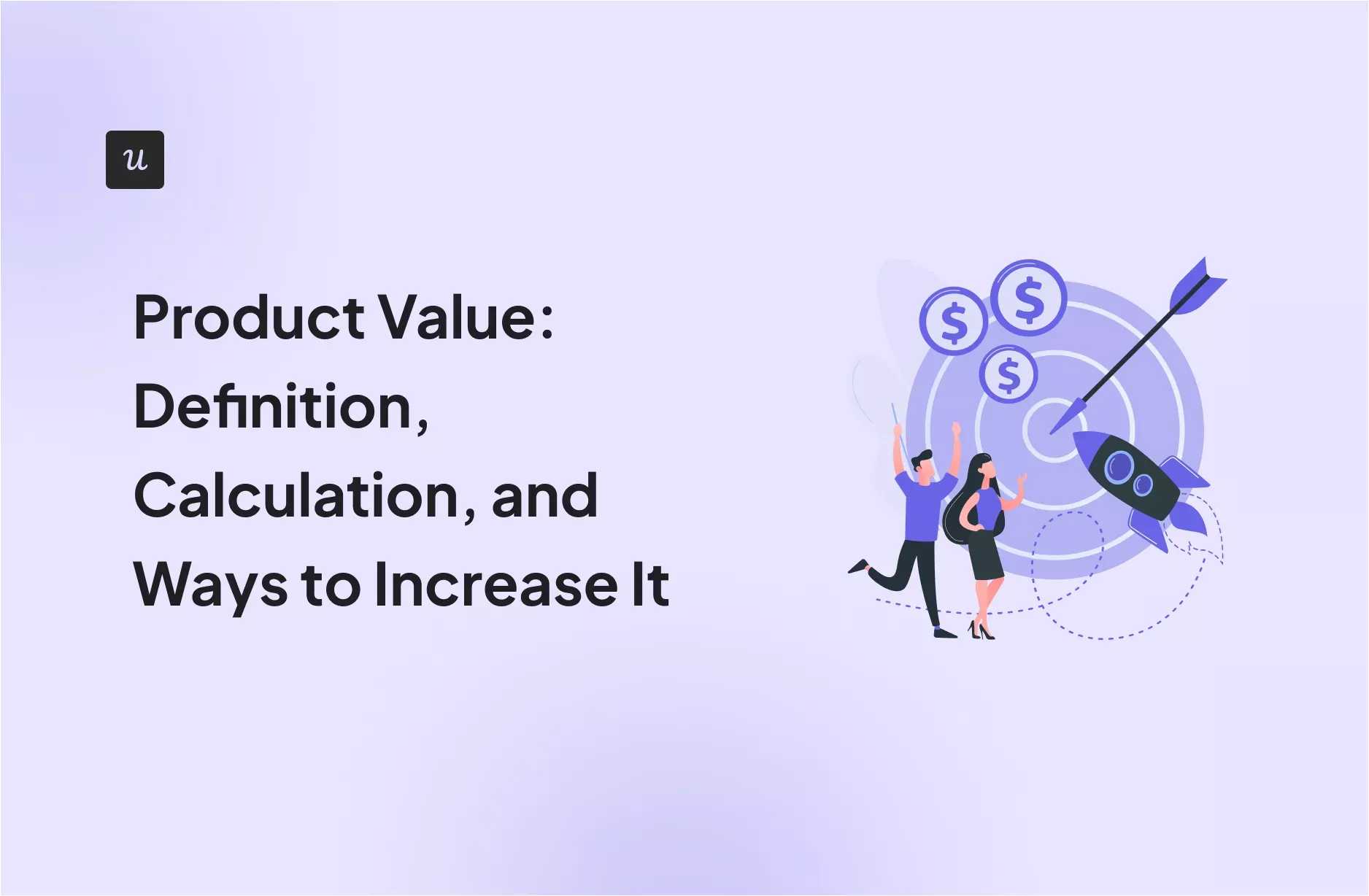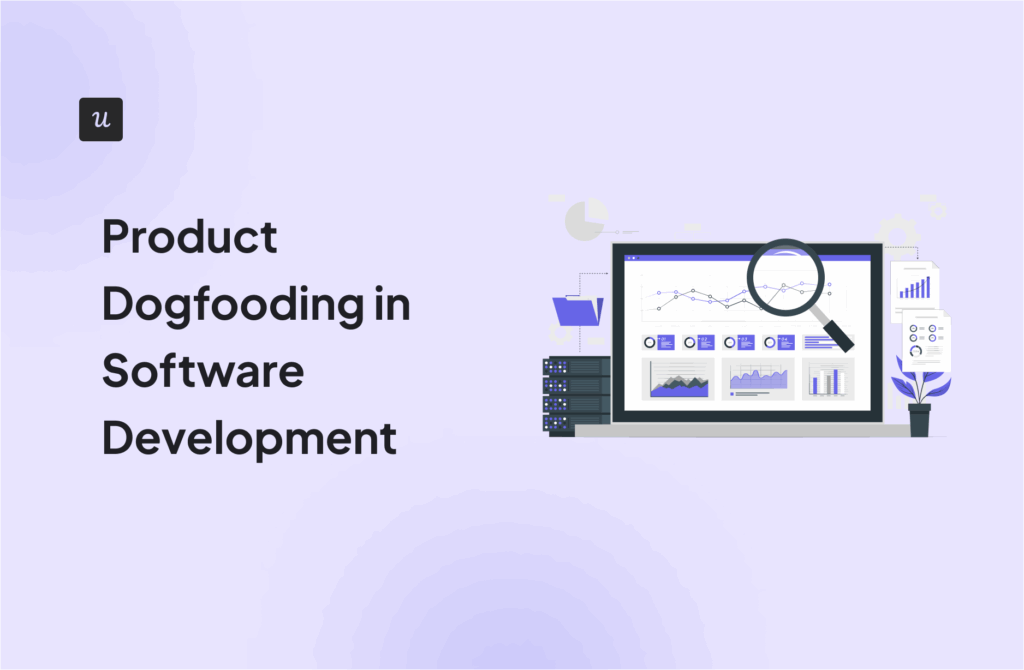
Try Userpilot Now
See Why 1,000+ Teams Choose Userpilot

What is product value?
Product value is the benefits of using the product: how well it solves user problems, satisfies their needs, and improves their lives.
From a business perspective, product value refers to how it contributes to company goals. Like generating revenue, increasing competitive advantage, or improving brand reputation.
The two perspectives are closely linked because products that offer more customer value are also more likely to achieve organizational goals.
What’s your primary goal for improving your product value proposition?
Understanding your main objective helps in tailoring the right strategy.
How do you currently measure product value?
The right metrics are key to understanding and improving the value you deliver.
What’s your biggest challenge in communicating your product’s value?
Pinpointing challenges is the first step toward solving them.
Unlock Your Product’s True Value
Based on your answers, it’s clear you’re focused on enhancing your product’s impact. Userpilot provides the tools to analyze user behavior, create personalized in-app experiences, and ultimately boost your product value. See how it works.
Why is product value important?
Product value is important because it’s the main reason why customers choose to buy and continue using a product.
Think about it:
If the product solves customer challenges or satisfies their needs, their satisfaction increases. Satisfied customers are less likely to look for other solutions and churn.
In fact, they’re more likely to upgrade to higher plans and pay a premium price for your solution. As their lifetime value increases, so does your revenue.
It gets better: satisfied customers become product advocates and promote the product via word-of-mouth. This reduces customer acquisition costs and, consequently, increases your profit margins. Or allows you to offer the product at a lower price.
Conversely, products that don’t offer value to their target customers won’t sell, no matter how well you market them or how low you price them.
Different types of product value to account for
Products offer users various kinds of tangible and intangible value.
Absolute value
Absolute value refers to how effectively a SaaS product solves a customer’s problem or fulfills their needs, regardless of competition.
For example, a project management tool that allows teams to complete tasks 30% faster provides clear absolute value.
Relative value
Relative value compares the product’s ability to meet customer needs against other solutions. It’s how much better (or worse) the product is than alternatives.
Here’s an example: A CRM tool that offers more integrations than its competitors provides higher relative value.
Perceived value
Perceived value is how valuable customers think the product is. This is based on branding, marketing, or features, not its actual impact.
For example, a SaaS product may have a high customer-perceived value if people see it as “innovative,” even if its features are similar to competitors.
Social value
Social value refers to the product’s ability to help users connect with others or improve their professional reputation.
For instance, customers choose Apple products not only because of their excellent UX or reliability but also because they improve their status and give them access to a certain tribe.
Monetary value
Monetary value reflects the financial benefit or cost savings a product provides to the customer, such as reducing costs.
For example, a SaaS accounting tool that automates invoicing saves businesses money on manual processes and in this way, delivers clear monetary value.
How do you measure product value?
How is the value of a product determined? Depends on the value type.
For example, measuring absolute value or monetary value relies on objective factors, like the time it saves the customer or the revenue it helps them generate. Measuring relative value is straightforward, as well: you compare your product to others.
Measuring perceived value is much trickier. Here are a few ways to do it.
Collect customer feedback to assess their sentiment
Customer feedback allows you to measure the perceived product value.
I recommend three surveys:
- Product-market fit (PMF) survey: Also known as the Sean Ellis test, it asks users how disappointed they would be if they couldn’t use the product or feature anymore. If more than 40% respond ‘very disappointed,’ you’ll achieve product-market fit. This means there are enough people ready to pay for your product.

- Net Promoter Score (NPS) survey: It asks users how likely they are to recommend the product to their friends or colleagues. A good NPS score (30 and above) is a measure of high customer loyalty. They wouldn’t be happy to recommend the product if they weren’t satisfied with it!

- Customer satisfaction score (CSAT) survey: By asking customers how satisfied they are with the product, the survey indicates how well the product addresses customer pain points and satisfies their needs.

You can find all templates for these (and more) in Userpilot’s template library.
Monitor product analytics to understand adoption and retention
While surveys rely on users’ words, product analytics look at their actions to give you a more objective indication of the value your product delivers.
For example, by tracking feature adoption and usage, you can determine how valuable it’s for users, while high retention rates signal that the product meets user needs and wants and they aren’t looking for alternative solutions.
The catch here is that user behavior trends aren’t always easy to interpret.
For example, the fact that they don’t use a particular feature doesn’t mean they don’t value it. Your onboarding might suck, and they simply don’t know about it.
That’s why it’s good practice to use analytics together with qualitative data sources like open-ended surveys or interviews.

Track metrics related to company growth
In addition to tracking customer behavior in-app, high-level growth metrics can shed light on how customers value your product.
Such metrics include:
- Monthly Recurring Revenue (MRR): It measures the predictable revenue your company generates each month from subscriptions. Growing MRR indicates an expanding customer base and higher conversions to paid plans, both indicating customer value.
- Customer Lifetime Value (CLV): The metric estimates the total revenue a company can expect from a customer over the entire duration of their relationship. A higher CLV suggests stronger customer retention and a higher willingness to pay, which can indicate higher value.
- Customer Acquisition Cost (CAC): It represents the cost of acquiring a new customer, including marketing and sales expenses. A decreasing CAC may mean you’re acquiring more customers through cost-effective channels, like referrals.
- Market Share: The percentage of your company’s total market revenue relative to competitors. Growing market share indicates that your company is capturing more of the available market, which may mean your product delivers more value.
How to increase product value and improve customer loyalty?
Let’s finish by looking at a few ways to add more value to your product.
Develop a product value statement and emphasize it in key messages
Before you launch any new product initiatives, craft a clear product value statement highlighting your product’s unique benefits and key differentiators.
A good product value statement answers three questions:
- What problems does the product solve?
- Who is the target audience?
- What are the unique features or benefits that set the product apart?
You need such a statement to guide your product development and marketing efforts. So that you can create more value and communicate it to the prospective customer.
Not sure where to start?
Use the Value Proposition Canvas, a tool that maps out customer attributes like their JTBDs, pain points, and expected gains, as well as how your product addresses them.

Focus on only adding functionality that improves the user experience
One way to enhance the product value is by adding new features. You can identify them by analyzing competitors’ offerings or asking your customers.
It doesn’t mean you build everything that they ask for. Such unchecked product development leads to feature bloat, technical debt, and diluted value proposition.
Solution?
Firstly, decide if the feature aligns with your product and business strategy.
Next, prioritize them by assessing their impact/value and the effort required to build them.
Start with the low-hanging fruit: features that bring the most value and cost the least. Low-impact, high-effort features, on the other hand, go to the bottom of the backlog.

Personalize onboarding for different customer segments to shorten the time to value
Not all your users need all your features. The odds are that your product caters to multiple user personas, each with its unique use cases. And 80% of the product value comes from the top 20% of features.
So?
You need to personalize the onboarding experience for each user persona, focusing on the functionality that they need most urgently to achieve their goals. That’s how you reduce the time they need to experience value and, consequently, increase the chances they adopt the product.
Here’s how to do it:
- Use a welcome survey to segment users based on their use cases.

- Analyze the in-app behavior of users within each segment to identify features whose adoption correlates with retention.
- Design onboarding flows to help users discover and activate these features. Use path analysis to find the most optimal route.
Remove friction points from the customer experience
While personalization reduces the time to value, friction can increase it. And if it’s particularly bad, it can spoil the user experience and lead to churn.
How do you find friction points?
By collecting customer feedback, analyzing support tickets, and monitoring user behavior inside the product.
For example, a funnel analysis can reveal the specific stage in the user journey where they drop off, like onboarding, while the path analysis shows you the exact actions leading to it.

Continuously speak with customers to understand their changing needs
If you want to retain your product-market fit, you must engage in continuous product discovery.
By continuously talking to your customers, you can stay on top of their changing needs and identify new opportunities.
By talking, I mean:
- Running regular surveys (PMF, CSAT, NPS, CES, etc.).
- Conducting interviews and focus groups.
- Listening to their conversations with your customer-facing colleagues, like your customer success or sales team.
Don’t rely on just one method. Use them to complement each other.
For instance, follow up on your surveys by interviewing particularly dissatisfied customers. Or send targeted surveys to gather insights about issues they brought up in their phone call with the customer service agent.

Conclusion
Product value is essential for its success. A product that doesn’t solve acute user problems or satisfy their desires won’t sell.
The issue is that value is very subjective and depends on customer perception. While some customers look for tangible value, like improved productivity or money savings, others are lured by less tangible factors, like the sense of belonging or prestige the product gives them.
To identify such diverse user needs and expectations, you need to engage in an ongoing conversation with your customers. And use diverse tools to capture their insights.
If you’d like to learn how Userpilot can help you identify genuine user needs, book the demo!







